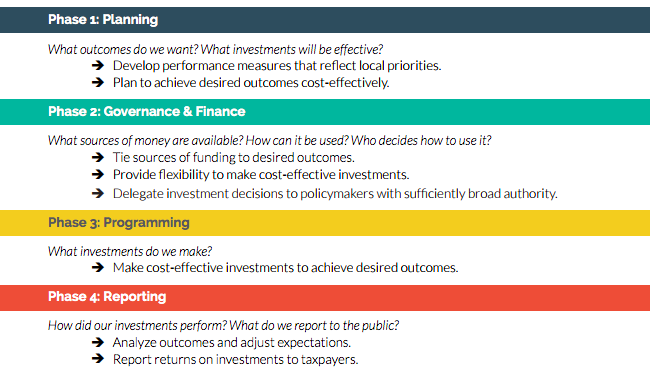NITC Researchers Hunt for Transparency in Transportation Investments

Principal Investigator: Rob Zako, University of Oregon
Project Overview: Effectiveness of Transportation Funding Mechanisms for Achieving National, State, and Metropolitan Economic, Health, and Other Livability Goals
Learn more about this research by viewing the two-page Project Brief; download the toolkit co-published with T4A, related presentations and the full Final Report on the Project Overview page. Hear firsthand from the PI by watching the post-webinar recording here.
FEBRUARY 2018 UPDATE
The full final report on this project is now published. The final report offers a comprehensive look at six case study states' strategies to ensure they are delivering value to taxpayers in a transparent process.
SEPTEMBER 2017
What do Americans get in return for their transportation investments? It’s a simple enough question on the surface, but digging for an answer yields a gnarled knot of information.
NITC investigators Rebecca Lewis and Rob Zako of the University of Oregon explored six case study states to try to get some clarity on the answer. They worked with metropolitan planning organizations (MPOs) in California, Massachusetts, Minnesota, Tennessee, Utah and Virginia to examine how livability goals were embedded in funding processes.
A toolkit for practitioners (PDF), developed with the assistance of Transportation for America, explores how to integrate performance measures, especially measures of outcomes, into all phases of transportation decision-making.
The efforts of three leading states—California, Oregon and Washington—will be examined in a panel discussion at the 2017 Transportation and Communities Summit at Portland State University next week. Zako will moderate the panel, which will also include Roger Millar of the Washington State Department of Transportation, Tammy Baney of the Oregon Transportation Commission and James Corless of the Sacramento Area Council of Governments. Read about the session: Bang for the Buck: How states and MPOs are striving to be more accountable and transparent.
“What are Americans getting for their transportation dollars? Not in terms of outputs like widened highways and added transit service; those are means to ends. But in terms of promoting the economy, promoting better health. What outcomes are Americans getting for billions of dollars of transportation investments each year? In general, we don’t have the data to provide a solid answer,” Lewis said.
The Moving Ahead for Progress in the 21st Century Act (MAP-21), adopted in 2012, requires states and MPOs to establish performance measures, set targets, and then report on progress towards these targets. But continuing planning, governing, financing, and programming processes often are not aligned with achieving such targets.
Moreover, there is a systematic lack of comprehensive data and performance measures to track the relationship of investments to livability targets.
“In our research, we had a great deal of difficulty determining just what outcomes states and MPOs are achieving, as they often don’t track these themselves. That outcomes are not being systematically monitored is an important finding,” Zako said.
It leaves an unanswered question that Lewis and Zako believe can act as a prompt for future academic research, but their efforts didn’t stop there. The next step in the project was working with Transportation for America to develop the toolkit, which is aimed at providing practical recommendations to practitioners, state DOTs, MPOs, elected officials and policymakers.
The toolkit, Better Outcomes: Improving Accountability & Transparency in Transportation Decision-Making (PDF), proposes a four-phase, outcome-based transportation decision making approach. It is broken down into steps, with recommendations and examples in each step.

“Our toolkit evolved into kind of a proposal for reforming transportation in America. Not a new proposal; our added value is taking recommendations and research that others have done and pulling it all together into a coherent framework,” Zako said.
Some states and MPOs are already doing parts of this larger effort. For example, Massachusetts and Virginia are two states that are striving to better link investments to outcomes and to deliver value to taxpayers. Lewis and Zako believe that bringing the pieces together into a toolkit will help practitioners make transportation decisions in a way that is accountable, transparent, and delivers cost-effective results.
